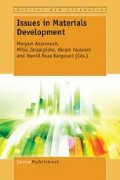Abstract
Writing in the strict sense of the word is derived from speech, and is, in fact, an imperfect visual representation of it, for such purpose as communication at a distance and the keeping of records. Writing is the only conventional device for recording sounds. Writing can be fun, students or learners should not worry about the perfection of the sentences and the logical development of ideas. In real writing situations, people write unplanned without revising or editing their writings such as formal letters, educational or some meetings notes, instructions, and examination papers.
Access this chapter
Tax calculation will be finalised at checkout
Purchases are for personal use only
Preview
Unable to display preview. Download preview PDF.
References
Ariogul, S. (2001). The teaching of reading through short stories in advanced classes (Unpublished M.A Thesis). Hacettepe University, Ankara.
Babaee, R., & Yahya, W. R. B. W. (2014). Significance of literature in foreign language teaching. International Education Studies, 7(4), 80–85.
Biber, D. (1988). Variation across speech and writing. Cambridge: Cambridge University Press.
Braine, G. (1997). Beyond word processing: Network computers in ESL writing classes. Computers and Compositions, 14, 45–58.
Day, J. T. (1988). Writer’s workbench: A useful aid but not a cure-all. Computers and Composition, 6(1), 63–78.
Dumitrescu, V. (2000). Authentic materials: Selection and implementation in exercise language training. Forum, 38(2), 20–25.
Firth, J. R. (1957/1968). A synopsis of linguistic theory, 1930–55. In F. R. Palmer (Ed.), Selected papers of J.R. Firth 1952–59. London/Harlow: Longman.
Harmer, J. (2006). How to teach English. New Delhi: Pearson Education India.
Hedge, T. (2005). Writing, A rich source of ideas for the teaching and learning of writing skills, using a framework that includes both ‘process’ and ‘product’ considerations. Birmingham: The University of Birmingham.
Hubbard, P., Jones, H., Thornton, B., & Wheeler, R. (1986). A training course for TEFL. Oxford: Oxford University Press.
Hunt, K. W. (1977). Early blooming and late blooming syntactic structures. In C. R. Cooper & L. Odell (Eds.), Evaluating writing describing, measuring, judging (pp. 91–106). Urbana, IL: National Council of Teachers of English.
Jacobson, E., Degener, S., & Purcell-Gates, V. (2003). Creating authentic materials and activities for the adult literacy classroom: A handbook for practitioners. Boston, MA: NCSALL.
Maley, A. (2009). Creative writing for language learners (and teachers). Retrieved from http://www.teachingenglish.org.uk/print/10479
Langan, J. (2001). College writing skills with readings. Boston, MA: McGraw-Hill.
Leki, I. (1991). Teaching second language writing: Where we seem to be. English Teaching Forum, 19(2), 8–11.
Lenore, K. L. (1993). The creative classroom: A guide for using creative drama in classroom. New York, NY: Elsevier Inc.
Li, J., & Cumming, A. (2001). Word processing and second language writing: A longitudinal case study. International Journal of English Studies, 1(2), 127–152.
Maroko, G. M. (2010). The authentic materials approach in the teaching of functional writing in the classroom. In R. Reinelt (Ed.), The new decade and (2nd) FL teaching: The initial phase (pp. 71–87). EU, Matsuyama, Japan: Rudolf Reinelt Research Laboratory.
McDonough, J., Shaw, C., & Masuhara, H. (2012). Materials and methods in ELT. Malden, MA: John Wiley & Sons, Inc.
Mukundan, J. (2011). A comparison of writing activities in commercial and government-sponsored textbooks (Unpublished research report). University Putra Malaysia, Serdang.
Mukundan, J., & Nimehchisalem, V. (2013). Materials for writing-was this the case of the runaway bandwagon? In B. Tomlinson (Ed.), Applied linguistics and materials development (pp. 213–230). Chennai, India: Bloomsburry Academic.
Oluwadiya, A. (1992). Some prewriting techniques for student writers. English Teaching Forum, 30(4), 12–15.
Purdy, J. P. (2009). Anxiety and the archive: Understanding plagiarism detection services as digital archives. Computers and Composition, 26(2), 65–77.
Reid, J. (1987). The Writer’s Workbench and ESL composition. Computers and Composition, 4(3), 53–63.
Sariçoban, A. (2004). Using drama in teaching Turkish as a foreign language. Eurasian Journal of Educational Research, 14, 13–32.
Saxenian, S. (1988). An EFL lesson on the thesis statement for inexperience writers. English Teaching Forum, 26(3), 28–30.
Stapa, S. H. (2004). ELT matters 1. Issues in English language learning and teaching. University Putra Malaysia Press, Serdang, Malaysia.
Stubbs, M. (1996). Text and corpus analysis. Oxford: Blackwell.
Sullivan, N., & Pratt, E. (1996). A comparative study of two ESL writing environments: A computerassisted classroom and a traditional oral classroom. System, 24(4), 491–501.
Wierus, A. (1990). Advertisement in the classroom. English Teaching Forum, 48–49.
Wiriyachitra, A., & Hobleman, P. (1990). A balanced approach to the teaching of intermediate-level writing skills to EFL students. English Teaching Forum, 8(4), 37–39.
Writer’s Workbench Version 8.0. (2002). Computer software. EMO Solution Inc.
Zamel, V. (1987). Recent research on writing pedagogy. TESOL Quarterly, 21(4), 697–715. Retrieved from http://dx.doi.org/10.2307/3586990
Author information
Authors and Affiliations
Editor information
Editors and Affiliations
Rights and permissions
Copyright information
© 2016 Sense Publishers
About this chapter
Cite this chapter
Mukundan, J., Kalajahi, S.A.R., Babaee, R. (2016). Material for Teaching Writing. In: Azarnoosh, M., Zeraatpishe, M., Faravani, A., Kargozari, H.R. (eds) Issues in Materials Development. Critical New Literacies: The Praxis of English Language Teaching and Learning (PELT). SensePublishers, Rotterdam. https://doi.org/10.1007/978-94-6300-432-9_9
Download citation
DOI: https://doi.org/10.1007/978-94-6300-432-9_9
Publisher Name: SensePublishers, Rotterdam
Online ISBN: 978-94-6300-432-9
eBook Packages: EducationEducation (R0)

